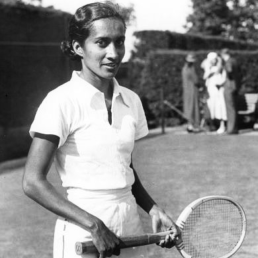On April 16th, 1853, the first passenger train in India ran from Bori Bunder Station to Thana but had it not been for some unusual circumstances, history might have been a bit different.
In the 1830s the earliest proposals for a railway started appearing in the Madras province where there was a growing demand for cotton for its textile industries. Sir Arthur Thomas Cotton proposed a railway connecting Bombay to Madras and the idea was well received.
Meanwhile, in the Bengal province, the idea of commercial railway lines was mooted by businessman Dwarkanath Tagore. To facilitate the movement of coal between Raniganj and Salkea Ghat in Howrah a survey was taken, one of the first of its kind.
After the initial planning and promotional phase, a couple of companies came up to handle the projects in various regions of the country. The GIPR (Great Indian Peninsula Railway) was incorporated in 1849 to connect the western peninsular cities to Bombay and Madras.
The EIR (East India Railway) was formed in 1845 with members like Rowland Macdonald Stephenson taking up the task of forging connections between Calcutta and various commercial points in the eastern part of the country.
Work began vigorously in laying the tracks, in October 1850 the foundation stone was laid for the GIPR line in Sion, Bombay. By the end of 1852, the line between Thana to Masjid Bandar of South Bombay was completed.
Trial runs were held between Byculla and Parel stations and at the beginning and end of 1852, the locals were quite awestruck at the sight of the steam engine roaring through their backyard and fields, they named it ‘lokhandi rakshas’ or a fire demon in Marathi.
After a few months in April of 1853 after much deliberations and a few trial runs, the first train made its maiden run from Bori Bunder to Thana. Carrying almost 400 passengers in 14 carriages; the train made the 33 km journey in about 75 minutes.
While it was jubilation time for the GIPR on the eastern part of the country for EIR things were not going so smoothly. By the end of 1852, they had completed 61 km of track and were scheduled to have the first passenger run in the same year as GIPR.
There were however some complications, the line went through French-occupied Chandernagore and it took a while to get the required permissions. Then the ships which were bringing the carriages sank at the Sandheads just off Diamond Harbour.
The carriages then had to be locally built which caused a huge delay, adding more to this delay the ship HMS Dekagree which was bringing the locomotive lost its way and went to Australia. It only reached Calcutta in 1854.
After the trials were held the inaugural commercial run from Howrah to Hooghly happened on 15th August 1854. Regular Services were introduced from the same day, morning and evening with stoppages at Bally, Serampore, and Chandannagore.
A fortnight later, the line was extended up to Pandua, and within six months, laying of tracks up to Raniganj, Both the sections, Pandua to Burdwan and Burdwan to Raniganj, were thrown open for passenger and freight services on 3rd February 1855.
If you ever visit the Howrah station today, you might notice that platform number 16 is oddly missing, that space is reserved for freights and closed for passenger movement, many believe that is where the first train started its Zero mile journey.
Sources: Vatsal Verma, Chitra Subramanyam, Indian Railways- A Visual Journey: Transforming a Nation’s Destiny (DK); George Huddleston, The History of the East Indian Railway;
Image Attributes: Beyer, Peacock, and Company. Madras Railway, from @WikiCommons;




